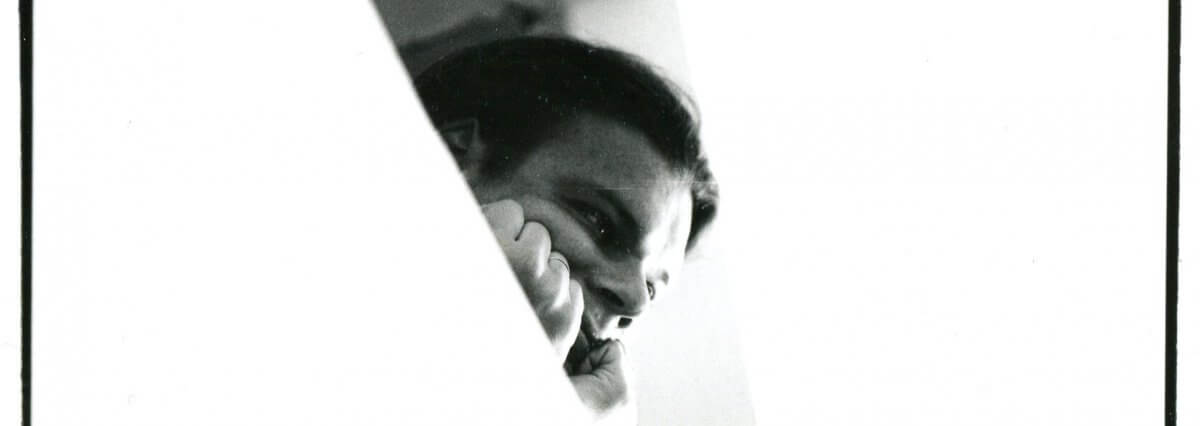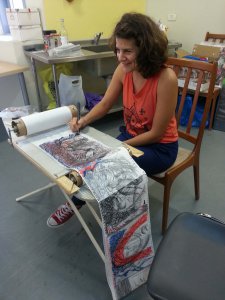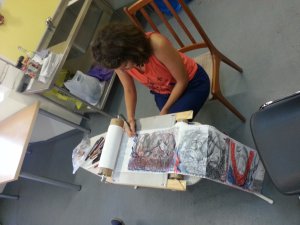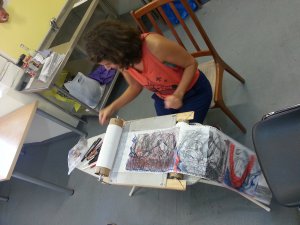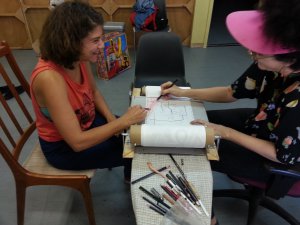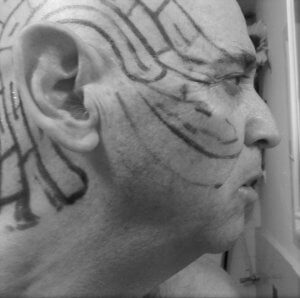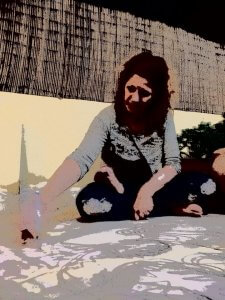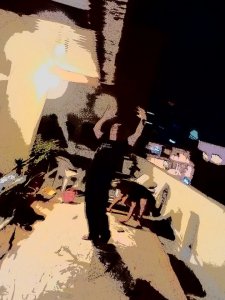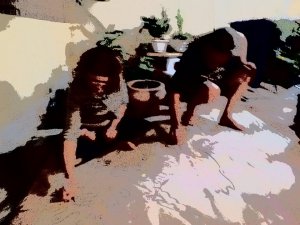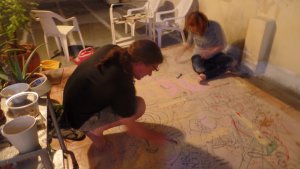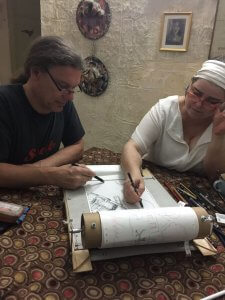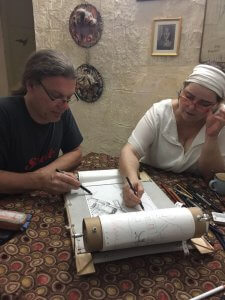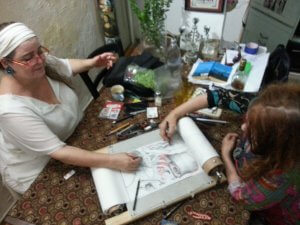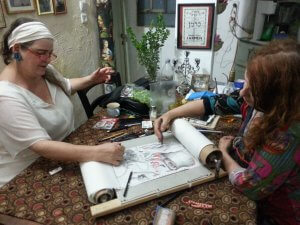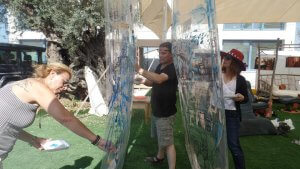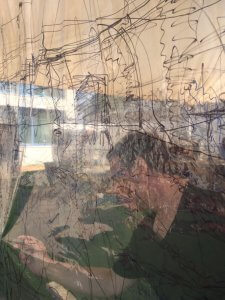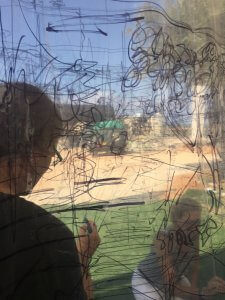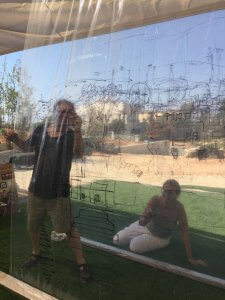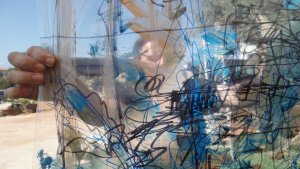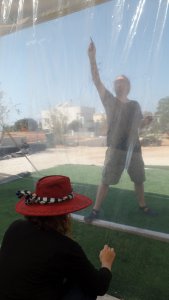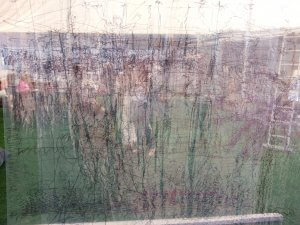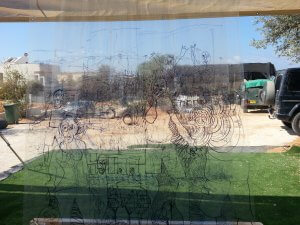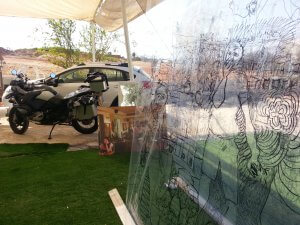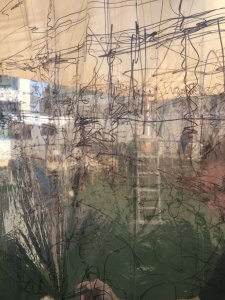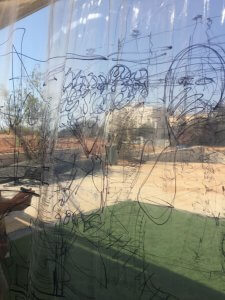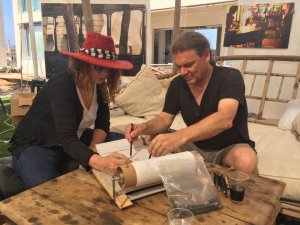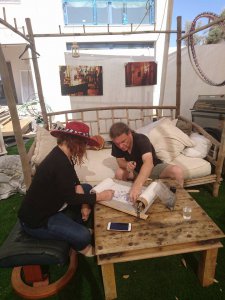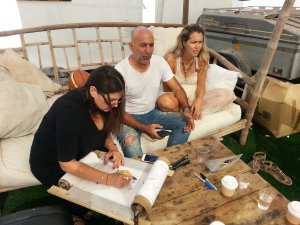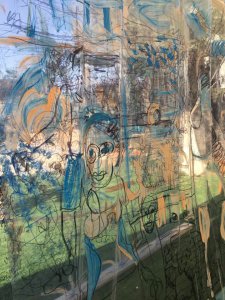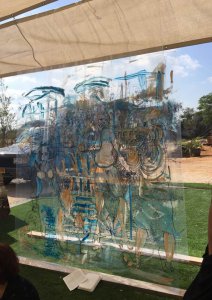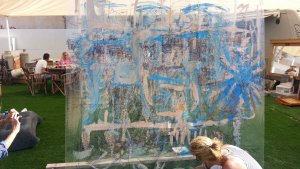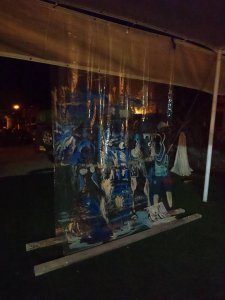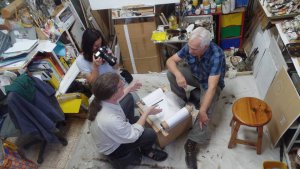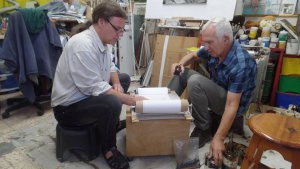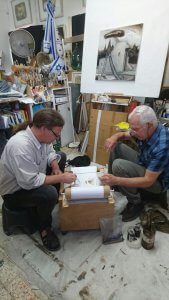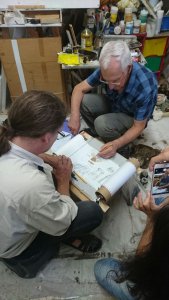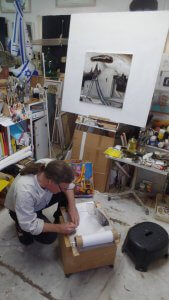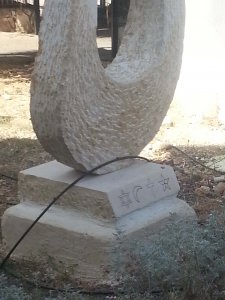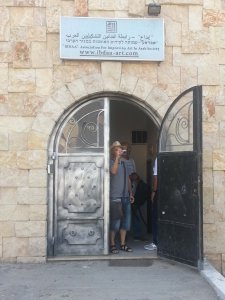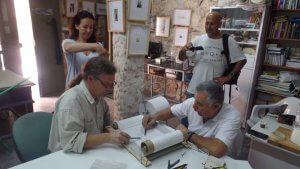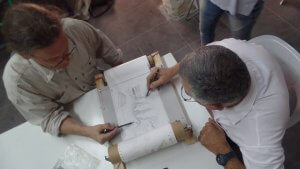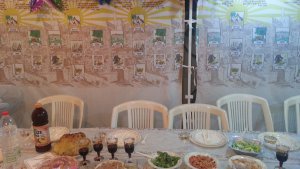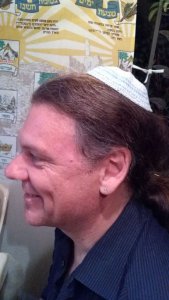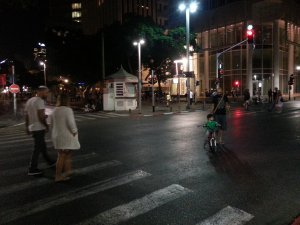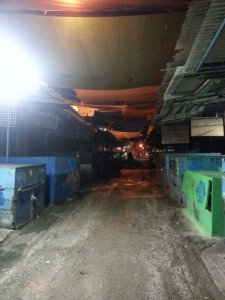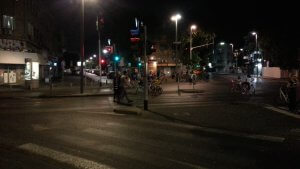Drawing Session with Karin Mendelovici
Author: Drawer
1.Nov
Drawing Performance on the
Rooftop of my new Appartment in Florentine
with Doron and Ophira. Made a long Movie, but meanwile some
of Dorons Fotos .
29.Okt
Drawing Sesion with
Miki Ben-Cnaan and OPHIRA AVISAR
Arsuf 24.Okt
Drawing Session and Performance in Arsuf
with Amir Eshel, Ophira Avisar, Doron Polak and lots of friends.
Bedeutung – 2 משמעות
Bedeutung – משמעות
OPHIRA AVISAR and ROLF-MARIA KRÜCKELS
TEL AVIV 2016
Drawing Sessions in the North
Drawing Sessions in the North
For another day i went to the North,
together with my friends Sabine, Doron and Amir.
Our first stop took us to Nahariya.
“In the years 1934/35 Nahariya was founded as an agricultural village by a company limited by shares and headed by the agronomist Dr. Selig Eugen Soskin (1873-1959), the civil engineer Joseph Loewy (1885-1949), the financial expert Heinrich Cohn (1895-1976) and the engineer Simon Reich (1883-1941). The company acquired an area of land by purchase from the Arab landowner family Toueini. After ameliorisation and parcelling the plots have been offered to new German Jewish immigrants who had escaped from Nazi persecution. The first two families permanently settled in Nahariya on February 10, 1935, which is now considered the official founding date of Nahariya.[5] After an accumulation of economic, financial and climatic problems the residents soon realized that agriculture was impractical and chose to focus on tourism, taking advantage of the natural surroundings and beaches. During the British Mandate of Palestine, many British officers coming from Khartoum stopped in Nahariya.”
(Text Wikipedia)
We meet Itschak De Lange in his Studio and his Gallery “The Edge”.
As a Second Stop we followed the Invitation of Eliya Beany in
“Kafr Yasif (Hebrew: כַּפְר יָסִיף; Arabic: كفر ياسيف, Kufr Yaseef) is an Arab town in the North District of Israel. It is located 11 kilometers (6.8 mi) northeast of the city of Acre and adjacent to Abu Sinan. The population of Kafr Yasif is largely Christian (57%) with a significant Muslim minority (40%), and a small Druze community.” (Text Wikipedia)
Eliya is engaged in the Museum of the IBDAA (Association for Developing and Encouraging Visual Arts in the Arab Society).
For more information, have a look at their Homepage:
www.ibdaa-art.com/en
We had a worm welcome in the Museum
and went on to Eliya Beanys Studio.
Sukkot 16.Okt
Sukkot
16-23 Okt.
“What is Sukkot?
Sukkot (Feast of Booths or Tabernacles) is one of the three biblically based pilgrimage holidays known as the shalosh regalim. It is an agricultural festival that originally was considered a thanksgiving for the fruit harvest. Sukkot are hut-like structures that the Jews lived in during the 40 years of travel through the wilderness after the exodus from Egypt. As a temporary dwelling, the sukkah also represents the fact that all existence is fragile, and therefore Sukkot is a time to appreciate the shelter of our homes and our bodies.
How is Sukkot celebrated?
Sukkot is celebrated by, first of all, building a sukkah. Jews are required to eat in the sukkah for eight days (seven days in Israel), and some even sleep in the sukkah for the duration of the holiday. The sukkah is decorated and the first day is considered a holy day in which most forms of work are forbidden. The rabbis dictated that arbat ha’minim (four species) should be held together and waved during the holiday. These are based on four plants mentioned in the Bible, and the rabbinic version includes the following: etrog (fruit of the citron tree), lulav (palm frond), hadas (leaves from the myrtle tree), and aravah (leaves from the willow tree). This waving ceremony was performed at the Temple in the ancient world.
The seventh day of Sukkot is called Hoshanah Rabah. On that day in the synagogue Jews circle the room seven times while the arbat ha’minim are held and special prayers are recited.”
(Text from: toriavey)
Bedeutung – משמעות
Bedeutung – משמעות
OPHIRA AVISAR and ROLF-MARIA KRÜCKELS
TEL AVIV 2016
Yom Kippur
Yom Kippur in Tel Aviv Okt.11.2016
Yom Kippur 11.Okt.
Yom Kippur
(/jɔːm ˈkɪpər, joʊm, jɒm/; Hebrew: יוֹם כִּיפּוּר, IPA: [ˈjom kiˈpuʁ], or יום הכיפורים), also known as the Day of Atonement, is the most solemn and second only to the Sabbath as the holiest day of the year in Judaism. Its central themes are atonement and repentance. Jewish people traditionally observe this holy day with an approximate 25-hour period of fasting and intensive prayer, often spending most of the day in synagogue services.
(Text: Wikipedia)
That means : No Cars, No Television, No Radio …no Market,
Bar etc.
People are out in the streets and go on bikes or walking.
The synagoges are open 24 hours and serve.
